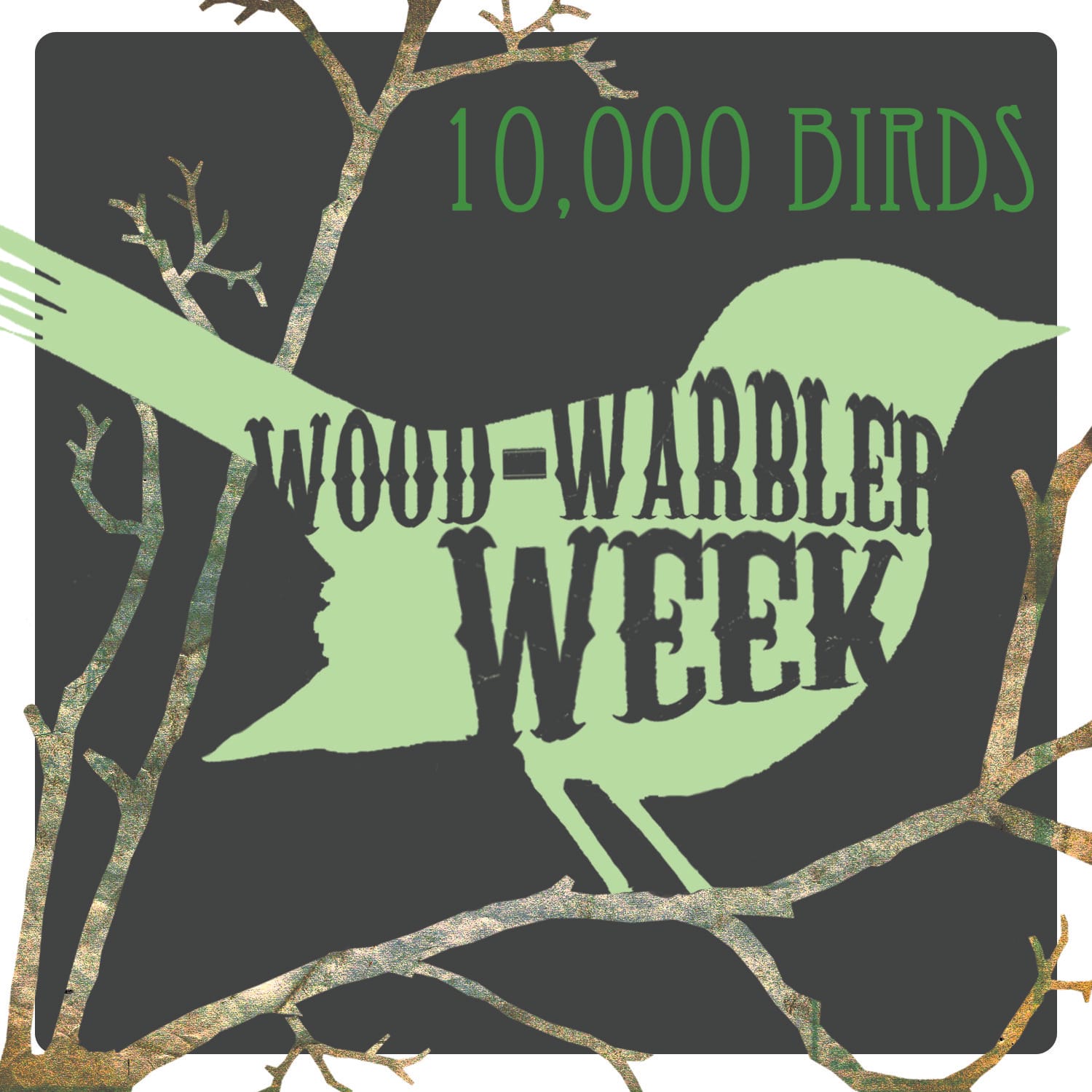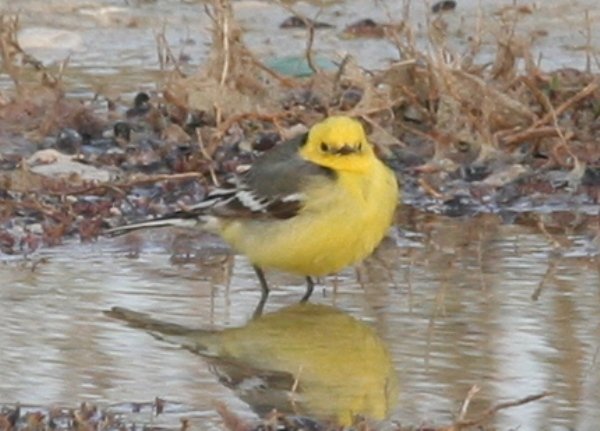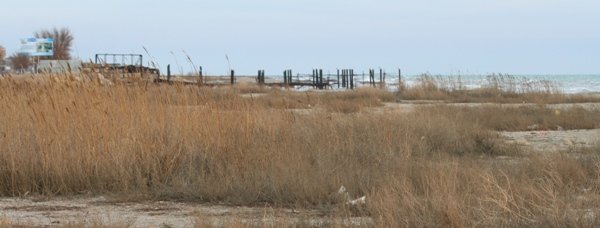So this is it, wood-warbler week. An online even that’s meant to celebrate the stunning spring migration of one of the world’s most colourful bird groups to also occur outside of the tropics. Largely restricted to the eastern half of North America, the season is often referred to as May-hem and deemed one of the 7 wonders of the bird world.
Big flipping deal.
Seems birders in North America think they are the only ones with colourful birds to watch in spring. Let me tell you something, they aren’t! And while our European warblers may not quite be what North American warblers are, both in taxonomic and … er … other ways, we have nice birds to watch as well. And each year during May, just to show our defiance in the face of Prothonotaries et al., we* call them the Counter-Warblers.
I’ll show you what I mean by two examples, both found and photograhed in Aqtau, western Kazakhstan, where I was fortunate to spend a few hours birding during a business trip in early April this year.
The waterfront of Aqtau, western Kazakhstan, on the shores of the Caspian Sea. The stunning architecture left aside, I was mostly drawn to this area by the reeds, the shallow pools, the shoreline, and the desire to check these for birds.

Numerous small bits of colourful plastic that dangled from every vegetation structure and were rolled around the ground by the playful wind were adding to the foundation of the landscape impression.
But wait, what was that? A yellow piece of plastic in one of the puddles rolled against the wind? That cried for closer inspection, and lo and behold, my first Counter-Warbler for the day…
…a fine male Citrine Wagtail!
So the pools were checked and the Mayhem that is wood-warbler migration was forgotten, or rather the pain of not being there was mitigated, and thus I happily ventured on and into the reeds to see what more life had in store for me.
The reeds on the beach of Aqtau – a surprisingly birdy area. Although frankly, it might also have been a surprisingy rodenty area that day, because as soon as I entered the reeds, all I saw were small brown shapes flitting through the reeds with every step I took, never to be glimpsed again – let alone be identified in the first place.
But then … a hop, a stop, a sit, and a turn, and there it was, my second Counter-Warbler encounter of the day!
Bluethroat – looking sharp …
… looking good …
… looking to get away from an obnoxious birder.
I’ll freely admit though that the highlight of the day, the trip, and possibly the year came in the form of the female Ménétries’s Warbler (Sylvia mystacea) depicted above. In the finest European warbler tradition, true to our values and standards, this was a lifer for me and a mighty fine one indeed considering the global distribution of the species and the place where I spotted it.
Good birds come to those who wait, and who can tell them from surrounding vegetation. And if all else fails in the face of a drab female Sylvia warbler, drink til she’s cute.
* By “we” I might just mean “I” here.
————————————————————————————————————————————————
 This week, 8 May – 14 May 2011, is Wood-Warbler Week on 10,000 Birds! Though wood-warblers, the mostly brightly colored birds of the family Parulidae, are only found in the New World we felt that birders the world over would be pleased to see a plethora of posts about these striking and sought after species. We are devoting a whole week to wood-warblers but are only just barely scratching the surface of possible topics involving this amazing family of birds.
This week, 8 May – 14 May 2011, is Wood-Warbler Week on 10,000 Birds! Though wood-warblers, the mostly brightly colored birds of the family Parulidae, are only found in the New World we felt that birders the world over would be pleased to see a plethora of posts about these striking and sought after species. We are devoting a whole week to wood-warblers but are only just barely scratching the surface of possible topics involving this amazing family of birds.
Right now great flocks of wood-warblers are making their way north from the southern United States, Mexico, the Caribbean, Central and South America to breed across the United States and Canada. Many other non-migratory wood-warbler species are living their lives across the neotropics, doing their best to survive and pass on their genes. Wood-Warbler Week is a celebration of all wood-warblers and we hope you join us in celebrating these absolutely wonderful birds. Read about them here but also get out and experience them. You won’t regret it!
————————————————————————————————————————————————



















Jochen, you are hilarious. I take back what I said on your last post. I like that term – Counter-Warbler. Can we rename the Wallcreeper to Wall Counter Warbler?
“Good birds come to those who wait, and who can tell them from surrounding vegetation” — love it.
I might be willing to make Citrine Wagtails honorary wood-warblers. They do have lots of yellow on them…
@Dale: huh? I was being perfectly serious. Did it make you laugh? My oh my… And yeah, you may call the wallcreeper wall counter-warbler. I can’t because I have only ever seen it as a dark grey silhouette against a paler grey sky. no colours, no counter-warbler.
@jmj: thanks!!
@Corey: no,no,no. Maaaaaybe, but just maybe, we might consider naming wood-warblers honorary Citrine Wagrails. Just consider the potential: Blackburnian Citrine Wagtail, Yellow Citrine Wagtail, Yellow-breasted Citrine Chat-Wagtail, Black-and-White Citrine Wagtail,…